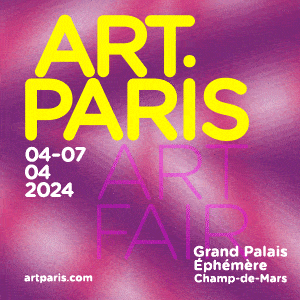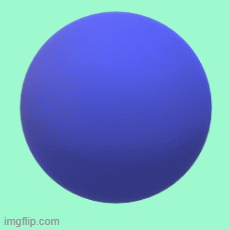Whitehot Magazine
April 2024
"The Best Art In The World"
"The Best Art In The World"
April 2024
January 2010, Jake & Dinos Chapman @ Contemporary Fine Arts Berlin

Jake & Dinos Chapman, Shitrospective
Contemporary Fine Arts Berlin
Am Kupfegraben 10, 10117, Berlin
20 November, 2009 through 30 January, 2010
To describe Jake and Dinos Chapman as provocative would be a gross understatement. The brothers have been labeled "the bad boys of British art", their work "cynical," "morally bankrupt" and, in an open tête-à-tête with Johann Hari in the British press, "Anti-Enlightenment."
The creative siblings who came to prominence with the rise of the generally notorious Young British Art in the 1990’s specialize in nightmarish depictions of death fields, disfigured and mutilated bodies and, most prominently, toxic mutants with genitals for faces. But the brother's true provocation to the art world was neither the figure of a frolicking pre-teen with a penile nose, nor a swastika-shaped installation containing tiny depictions of crimes against humanity. Instead, it was in a series of works entitled Insult to injury in which the brothers purchased a set of Francesco Goya etchings and altered them by adding...funny faces.
But as the smoke clears and the provocation ages, it would seem that holding a Chapman brothers' retrospective today would allow viewers to experience the art and the infamy in a different context - that is, such an exhibition could encourage the reconsideration of the shock value of both their work and (hopefully) the viewer's own thinking about artistic provocation. But what to do amidst a financial crisis when such a show would ring up an enormous bill? And what's a retrospective of the Chapman brothers without Hell – the aforementioned swastika-shaped piece which was lost in the fire that devastated the Charles Saatchi collection in 2004?
The brothers’ answer was to construct low-budget cardboard models of their work; papier-mâché instead of bronze, Styrofoam and toilet paper rolls instead of synthetic resin. Thus, for their retrospective at Berlin’s Contemporary Fine Arts, the brothers' macabre world was recreated using cheap materials and in miniature scale. Fitting with the Chapmans’ proclivity for scatology, the show was titled Shitrospective. But just as their controversial art calls for reflection on the aesthetic byproduct of a morally corrupt society, the show’s title also seems to allude not only to the artists' replacing their own work with far-from-perfect models and the possible abuse of their status as art world stars (that the presentation of cardboard models could imply); the title also stands in protest against the pre-maturity of a retrospective show and the ego boost that comes with it.
The show is divided into two parts, echoing the galley’s architecture. The first floor hosts the series Two legs bad, four legs good from 2007, while the second floor showcases newly created models of their most well-known pieces - a mini-Chapman Land of sorts. Famous pieces like Hell, Sex, Death and Übermensch are deconstructed in a crude and makeshift fashion, giving the models a naive, even cute makeover, similar to the shoebox book report of a grade-schooler. And indeed, Fuckface is much less intimidating when its penis-nose is made out of a toilet paper roll, and the freakish, double headed Two-faced cunt seems like a naïve literal interpretation of an adult curse overheard by a child.
However, the models are by no means stripped of their gruesomeness - it just takes longer to see how disturbing an image of cruelty and horror they represent. It's not only the DIY materials but also the size of the work that alter the nature of their reception. The model of the Chapman Family Collection, for example, transforms the 34 tribal fetishes and totems with McDonald's wrappers into ghoulish play characters on a board game. And so, if the manner in which the original work was displayed mocked the imperialist fascination with trophies from an ancient “inferior” race, the current miniaturization contains the unpleasant thoughts on the racism and cruelty bequeathed to us: our fear of the ‘other’ has become a board game. Let the ghouls play against each other. Or are they actually teaming up against us? The illusion of being completely outside the experience and of watching the goings-on from above gives a piece like the Chapman Family Collection a harsher critical tone.
But the models are mere simulacra - distorted copies and oversimplified representations. As Jean Baudrillard argues in Simulacra and Simulation, copies can expose the truth of the original through their "hyper-reality". However, in the case of the Chapmans' cardboard models we see the simulacra as a challenge to the original in its lack of hyperreality. Interestingly, the original sculptures of Jake and Dinos Chapman are simulated representations in their own right. Pairing them with imperfect models invites reconsideration of both the original piece and of the artists’ philosophy. This appears to be the case in Death, a depiction of a couple in a 69 position performed on an inflatable floating device. The model shows two crudely cut and pasted figures placed on top of each other, their flattened bodies contrasted by the roundness of the floating mattress. While the original sculpture shocks with its pornographic objectification of the human body in vivid colors (the male and female figures are turned into objects in the form of inflatable sex dolls), the cardboard bodies are faded, flattened, and lifeless - closer to death.
Dismembered bodies, cruelty and death are themes returned to repeatedly by the brothers. Thus, their fascination with Goya's Disasters of War (1810-20) and the portrayal of the atrocities the artist had witnessed during the Peninsular War between Spain and France (1808-14) is hardly surprising. The Chapmans’ depictions of torture and disfigurement borrow heavily from the artist whose works became increasingly tortured on account of his syphilis-related dementia - a detail the Chapmans possibly allude to in Great Deeds against the Dead and its affiliated piece, Sex. Great Deeds is a life-size, three-dimensional rendering of one of Goya’s etchings. It was later recreated and renamed Sex, the only difference between the works being the stage of decay of the dismembered corpses hanging from a tree. For Shitrospective, the brothers created a cardboard model of the piece Sex, as well as a separate model for one detail, namely the horned skull with maggots which they flippantly named Migraine.
Back on the first floor, in Two legs bad, four legs good, the artists examine the "animalism" espoused by the pigs in George Orwell's Animal Farm. In the political allegory, the seven commandments created to unite the animals against the humans were boiled down to one basic statement: "Four legs good, two legs bad" (wings count as legs). But as the pigs become more human, the maxim soon changes into "Four legs good, two legs better!" Once again, the Chapmans point at humanism as a deceitful notion and how volatile at its fragility as soon as boundaries of morality are violated. Upon closer examination of the myriad creatures inhabiting the Chapmans' works - from Goat to Cow with shit (and the various birds in flight), one becomes aware of the farm's potential inter-animal volatility. Each creature appears suspect, ready to violate the next. In keeping with the wisdom that human beings are the world's most dangerous predator, how easily could this farm become a scene of atrocities, resembling the human-made horrors on the second floor?

Hili Perlson
Hili Perlson is a freelance art journalist and critic based in Berlin. She is a co-founder of Meta Magazine.












